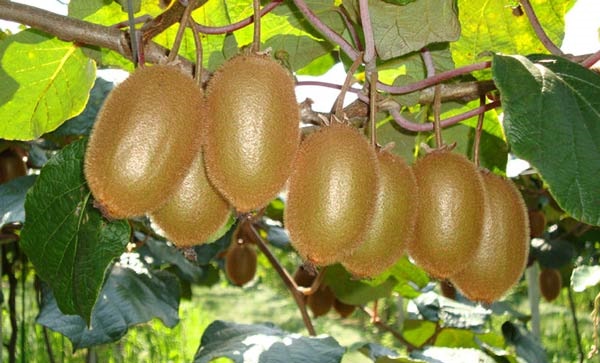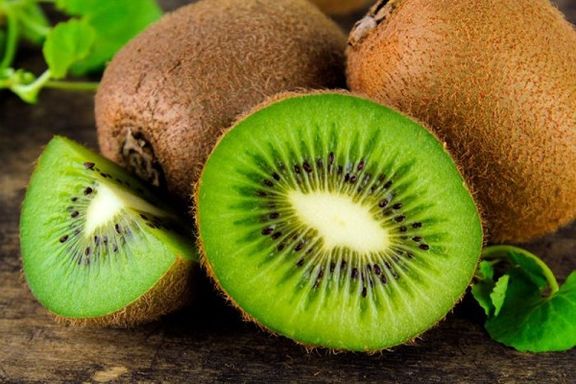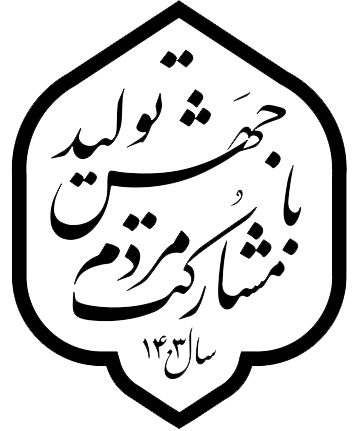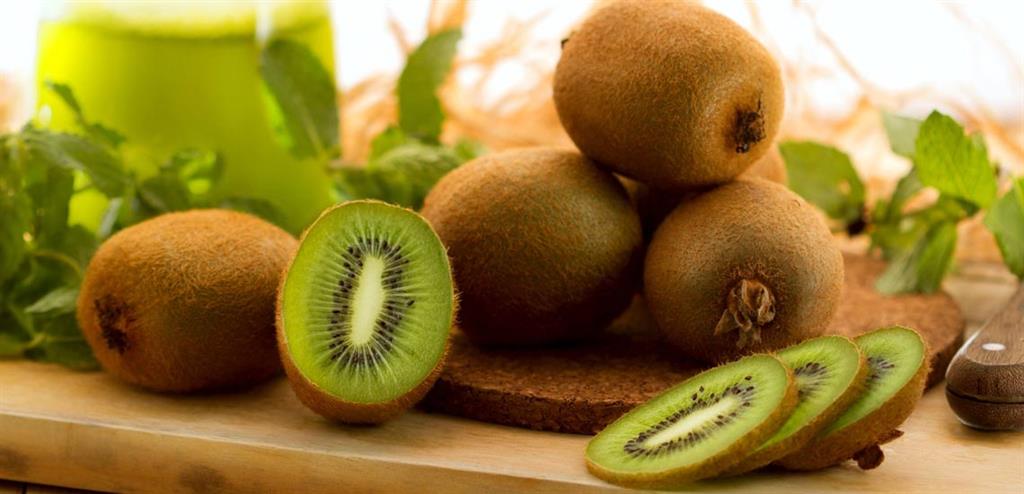
The kiwi is scientifically named Actinidia deliciosa and is from the family of Actinidiaceae. It is a two-rooted tree with moderately thick roots, juicy and shallow fleshy, deciduous and intermittent leaves, which its flowers bloom in late spring.
Its fruit can be harvested from early November. Kiwi contains a variety of vitamins including vitamin A, B, C, E, PP, as well as various ingredients such as tannin, zinc, phosphorus, sodium, potassium and fiber components.
Each 100 grams of kiwi contains 300 mg of Vitamin C, almost twice the amount of citrus fruits. Kiwi is of particular interest in the world and even though it has a short cultivation history, it has been quickly developed and well accepted. For the first time in Iran, two kiwifruit seedlings were introduced in 1969 and planted in Ramsar.
Because of the characteristics such as coarseness and uniformity of fruit, marketability and good storage properties, Hayward cultivar has received more attention than other varieties and covers most of the country's kiwi orchards. Currently, China, Italy, New Zealand, Iran, Chile, Greece and France are the major producers of this fruit and Iran is the fourth largest kiwi producer in the world. The major kiwi exporting countries include New Zealand, Italy, Chile, Greece, Iran and France, and Iran is the fifth largest kiwi exporter in the world. The Islamic Republic of Iran ranks fourth among the countries producing kiwi in terms of cultivation and production
Kiwi cultivars in Iran
Important commercial female varieties of kiwi are: Abbott, Allison, Bruno, Hayward and Monty, and the important male kiwi varieties include: Matua and Tomori. In Iran, more than 95% of kiwifruit gardens have been constructed using Hayward cultivar, which is used for pollination by two male cultivars, named tomori and matoaa, which the flowering time of the tomori variety overlaps with that of the female Hayward.

Planting kiwi seedlings
Kiwifruit grows very well, so it is necessary to maintain proper spacing between seedlings when planting in the ground, and pruning should be carried out regularly.
Water
Kiwi is in dire need of water due to its high vegetative growth. Inadequate water, especially during growth, causes wilting of the leaves, which eventually causes the entire leaf to burn. Watering of kiwi gardens is done from the first half of May to the first half of November. Irrigation intervals and numbers depend on soil storage capacity, rainfall, relative humidity and air temperature.
Current situation
The most important kiwi producing provinces in the country are Mazandaran, Gilan and Golestan provinces. The production area and area of cultivation and yield of kiwi in the country in 2018, based on the official statistics of the Ministry of Jihad-Agriculture can be found in table below:
The status of major kiwi producing countries according to FAO statistics in 2018
|
Performance (kg/ha) |
Production (ton) |
Surface under fertile cultivation (ha) |
Country |
|
12130 |
2390287 |
197048 |
China |
|
19751 |
523595 |
26510 |
Iraly |
|
34519 |
434048 |
12574 |
New Zeland |
|
28788 |
294413 |
10227 |
Iran |
|
25468 |
225797 |
8866 |
Chille |
|
23682 |
182589 |
7710 |
Greece |
|
17137 |
65036 |
3795 |
France |
|
17672 |
43950 |
2487 |
Turkey |
|
8855 |
21075 |
2380 |
Portugal |
|
13653 |
25600 |
1875 |
Japan |
|
14874 |
22965 |
1544 |
Spain |
|
18904 |
28300 |
1497 |
USA |
|
16994 |
17215 |
1013 |
Other countries |
|
15403 |
4274870 |
277526 |
World |




